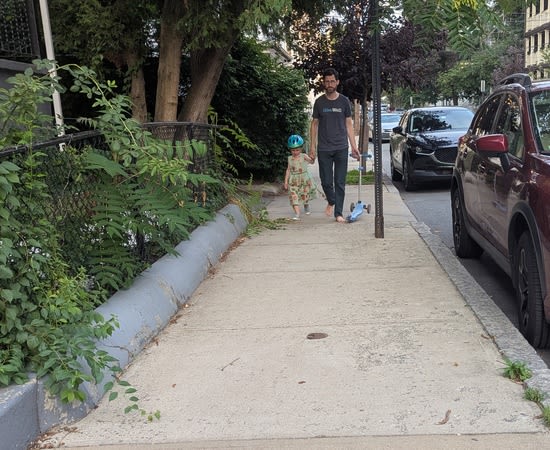Published on August 1, 2025 2:30 AM GMT
One strategy we often find helpful with our kids is the "do over":something didn't go well, let's try again. Two examples:
Nora (4y) can't yet crossstreets onher own, but we're starting to practice. Walking to a fartherpark, a walk where we often practice, she asked Julia "when we getto the little street can I cross it"? Julia said "we'll need to checkin when we get there". But Nora did not check in, and 'practiced' onher own. Even though this was on a tiny street, this was still reallyunsafe and is something she very much needs to not do. I caught up,spoke to her firmly, she burst into tears, I walked her back, and wedid it over together. As soon as she had the chance to demonstratedoing it correctly she cheered up dramatically, and then we had a goodtime at the park.
We're in a hurry to get out the door and I put Nora's coat onher. She bursts into tears: "I wanted to put my coat on myself!" Iask "should we do a do over?" She says yes, I take her coat off, sheputs it on, she's happy.
These sound very different, but they're really two sides of the samelearning process. In first case I wanted Nora to learn something. IfI had just spoken sternly to her about not crossing streets solo Idon't think it would have sunken in as well. Making it inconvenient,getting to the park later than if she'd done it the right way, havingthe time walking back to reflect on her error, and then doing it theright way, all contributed to taking it seriously and learning.
The second case is much more minor, but it's just the other wayaround: if I'd just apologized to Nora and said she could put her coaton next time I would have learned less, and she would rightlybe less confident that I would actually follow through.
I think this is a neat symmetry, but to be fair it's not always why wedo the second category of do overs: sometimes we're just trying toresolve a meltdown. For example, say there's a miscommunication whereit turned out the kid had a very strong preference but we didn't askand they didn't tell us. Sometimes a do over would be aboutpracticing what good communication would have been:
Nora: I didn't want my cereal in this bowl, I wanted a large bowl!
Me: Would you like to do a do over?
Nora: Yeah
Me: If you want your cereal in a specific bowl you'll need to make sure Iknow that.
Nora: Ok
Me: Should I get you some cereal?
Nora: In a large bowl!
Other times, though, the kid is too fragile (perhaps very hungry), wedon't have time, or I'm being a lazier parent. In these cases thedo over is just a way to calm them down (and clear the way to notbeing so very hungry):
...
Me: Would you like to do a do over?
Nora: Yeah
Me: Should I get you some cereal in a large bowl?
Nora: Yes!
This version is still helpful; the kid ends up happy and fed. Youdon't have to take every opportunity to model ideal communication.It's not always clear in the moment what ideal communication wouldhave been, especially as kids get older and interactions get morecomplex.
With all of these different applications of do overs, a key thing thatI like is that it quickly breaks the bad pattern and replaces it witha better one. You're not digging into what should have happened, youjust jump back and try it again.
Discuss


